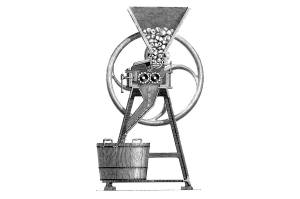A COVID-19 vaccine has always been the great hope to take us to the promised land of alert level one and an end to the ‘new normal’: no more social distancing or face masks. Unsurprisingly given the scale of the crisis across the world the race is on to find something that works. It’s a cliche to say it, but a successful vaccine would be a ‘game-changer’ and being first on the block grants the successful pharmaceutical company many millions in profit and worldwide acclaim. Today’s front pages in Britain are plastered with talk that Oxford’s vaccine trial might be close to a breakthrough. But finding a vaccine is no easy task and it is right to be cautious about this news.
In the months since the pandemic emerged, there has been no shortage of interest from scientific laboratories around the world in trying to develop a vaccine. There are more than 125 potential candidates in pre-clinical trials but only three so far have made it to actual large-scale testing on people. The increasingly positive noises coming from Oxford suggest that they are now the front runners in this global race.
The details remain sketchy but there are reasons to be encouraged: funding and a license are in place and a deal has been lined up with AstraZeneca for widespread and quick distribution. If successful, there has been talk that we could have a vaccine as early as September: if so, this would be a stunning and unprecedented achievement when compared to the time it typically takes to develop vaccines. This ambitious timetable could be reflective of technical and manufacturing advances and the huge resources being thrown at this project. But the difficulty of developing vaccines must also make us cautious and we should not hang too much hope on a successful vaccine being available by the end of summer.
After all, it is worth remembering that coronaviruses have proved to be quite resistant to vaccines. No vaccine was ever developed for SARS-1, the original COVID epidemic, or the common cold. Other viruses, notably HIV, are also not treatable by a vaccine, while the influenza virus regularly mutates and exists as a number of entities that necessitates a yearly vaccine. Even then, the effectiveness of this vaccine varies considerably.
More positively, the team in Oxford report encouraging levels of both antibody and T cell stimulation by their vaccine. This is hugely important for two reasons. Firstly, if borne out by wider testing this shows that the vaccine is able to stimulate a sufficient response to prevent COVID-19 infection. Clearly, this is vital in any workable vaccine. But secondly, and almost more importantly, if T cells are appropriately recruited and form memory T cells in the human body then immunity can last for many years. This is particularly relevant as it seems that antibodies to COVID-19 can fade after a relatively short space of time. This means that any vaccine that relies on antibodies alone may have a very limited shelf life.
But as well as the previous difficulties we have had in developing vaccines for coronaviruses, there is a further reason to be cautious: the Oxford group is still yet to publish its phase one study results (an initial small scale trial). Given that they are actively recruiting to their larger phase three study, we must assume no safety issues were noted in the first human studies. But regrettably it is not uncommon that when a medical product is trialed on a much larger number of people safety issues subsequently emerge.
What’s more, it may be possible that even though the vaccine stimulates a response to pending infection, the virus may be able to ‘fool’ the response and so still cause infection. Also, we should prepare for the possibility that COVID-19 could change shape — viruses can do this — sufficiently to render the memory cells created by the vaccine ineffective. Unfortunately, this means that a person who has received a vaccine once again becomes susceptible to infection.
As you would expect given the riches and rewards guaranteed to whoever wins the vaccine race, competition is intense. Potential candidates from the United States (Moderna) and China (Sinopharm) are also undertaking large trials. Not to be outdone, Imperial College is also in the latter stages of developing its product.
From what we know about these potential vaccines, all seem to stimulate a good antibody response in people but the T cell response is less clear. Sinopharm is of interest as it is effectively owned by the Chinese government and had a time advantage over its rivals. Like the Oxford trial, it is having to recruit people elsewhere because of the paucity of cases in China now. As an attenuated live vaccine it is predominantly reliant on antibody formation which, given the nature of COVID-19, may render the vaccine ineffective. Reading between the lines, it seems that it is the T cell stimulation which is unique to Oxford’s trial that has got scientists and the British government so excited.
[special_offer]
Assuming — and this is still a big if — the larger scale Oxford trial currently taking place in South Africa and Brazil shows initial efficacy (prevention of infection) and the vaccine does go into mass production and distribution in the fall this is still not quite the end of the story. The current trial will inevitably be short in duration, so careful longer-term follow-up will be needed so that possible safety concerns that are not immediately obvious are not missed.
The stakes are extremely high. There is huge pressure on scientific institutions, pharmaceutical companies but mostly on governments to roll out a vaccine as soon as possible. The likelihood would be that if a phase three trial is successful, whether it be in Oxford or elsewhere, there will be mass administration in a short space of time. Safety of any vaccine is crucial. Also, the prevailing climate in October and onwards will be important. If there is no hint of a second wave and deaths and hospitalizations continue to fall then administration of a new vaccine to the general public could be a difficult sell. No doubt it will be presented as a route out of the significant restrictions we still remain in but sufficient numbers would need to consent to the vaccine for longer lasting efficacy and, in the feverish social-media driven climate that we live in, anything could happen.
So while it is right to be optimistic about Oxford’s possible vaccine, it’s also right that we sound a note of caution. There are early signs of promise, but this vaccine has many hurdles still to jump before we can know for sure that it offers us an escape from the place we find ourselves in now.
This article was originally published onThe Spectator’s UK website.


















